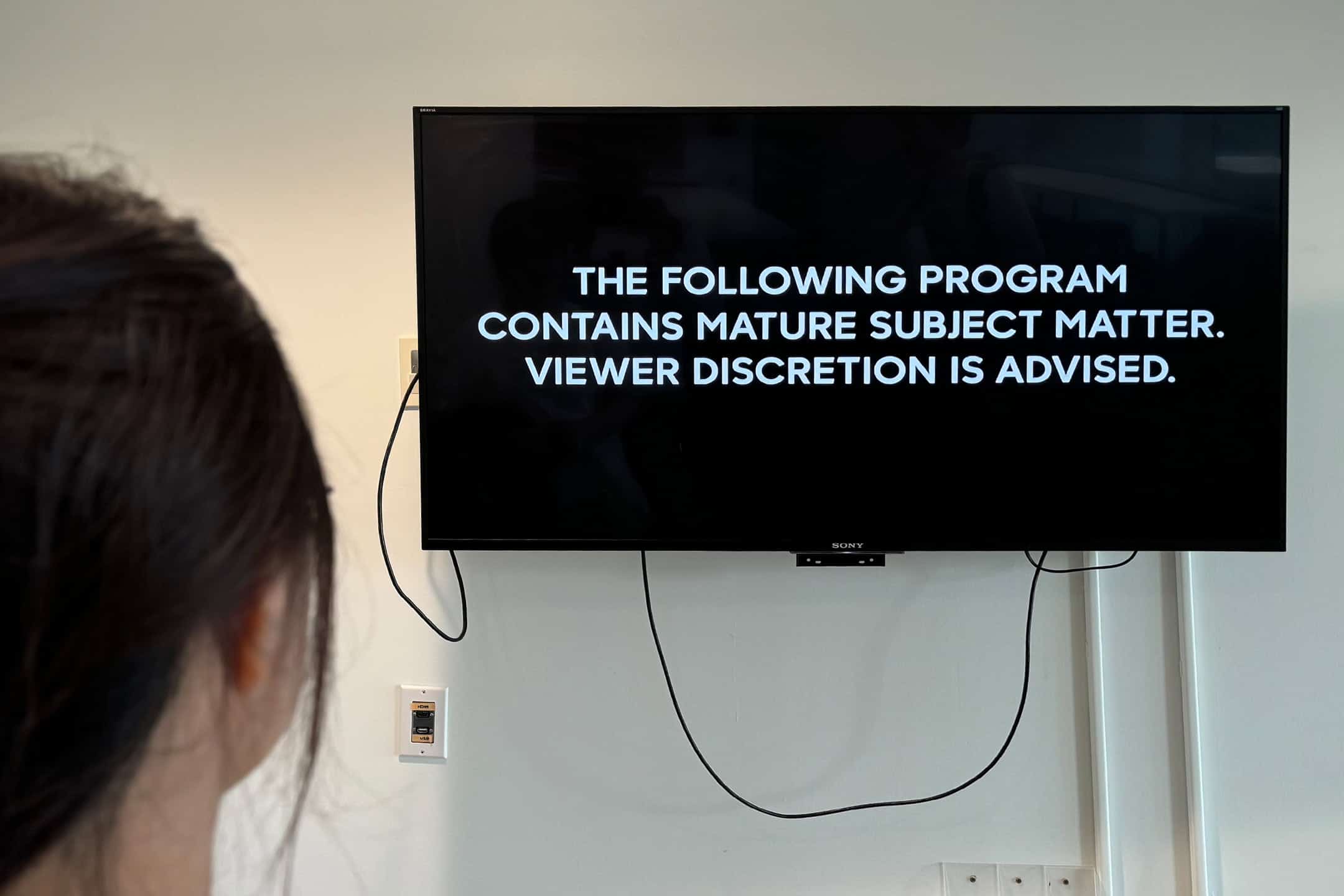Content warning: This article discusses domestic violence, sexual violence, and self-harm.
The debate about whether to put trigger warnings at the beginning of films is nothing new. However, the discussions have lately resurfaced with the promotion of It Ends With Us, a film adaptation of Colleen Hoover’s bestselling young adult novel of the same name. With themes of domestic violence and emotional abuse at the film’s core, fans were divided over the necessity of warning audiences about these sensitive topics.
One side of the trigger warning discourse claims that trigger warnings could diminish a film’s emotional impact, while the other argues that providing context empowers viewers to make informed decisions about engaging with emotionally difficult material.
Far from stifling creativity or coddling viewers, I believe that trigger warnings enable audiences to confront difficult content on their own terms and allow filmmakers to promote compassion and inclusivity without compromising the creative process. By offering advanced notice, trigger warnings foster an environment of consideration and empathy, allowing audiences to make informed decisions about what they watch.
Purpose and criticisms of trigger warnings
Trigger warnings serve a straightforward but important purpose: to inform audiences of potentially distressing content. These warnings typically precede films that engage with sensitive topics like sexual violence, domestic abuse, or self-harm. The warnings help ensure viewers are mentally and emotionally prepared for the content ahead.
However, some argue that trigger warnings ‘coddle’ individuals by encouraging them to avoid uncomfortable content.
These critics, such as journalist Greg Lukianoff and social psychologist Jonathan Haidt, believe trigger warnings promote a society where we would be left unchallenged and avoidant of difficult emotions or ideas that are essential to personal growth. For instance, if one attempts to avoid distressing content related to war, they may be limiting their historical knowledge.
Yet, the individuals who advocate for trigger warnings are usually those who have experienced traumatic events of abuse and violence and, therefore, already have a deep understanding of the material they wish to see warnings for. They will not lose much insight by choosing not to engage in the related content because they already know it first-hand.
Moreover, the argument that trigger warnings lead to avoidant behaviour is unsupported. For example, a 2023 study published by American healthcare academic publication Springer showed that most viewers still choose to engage with possibly triggering material even after being forewarned. This, to me, demonstrates that trigger warnings do not promote avoidance but simply provide viewers the ability to choose the material they watch.
Additionally, I don’t believe that the filmmaker decides whether to dictate whether viewers must confront difficult material or not. In fact, I believe the filmmaker has a responsibility to inform individuals about potentially distressing content.
Forced exposure to distressing material can be harmful for survivors of trauma. Exposure to stimuli that remind survivors of their traumatic experiences can be detrimental, as the appropriate healing processes vary from person to person.
Finally, the perception that trigger warnings stifle creativity is similarly misguided. From my experience, informative warnings neither spoil the narrative nor detract from its emotional impact when executed correctly. Netflix’s short lists of distressing themes on the introductory pages of their films and shows are great examples of effective and subtle trigger warnings. Offering information this way does not spoil the story, but keeps audiences informed.
The issues with psychological studies
Critics of trigger warnings often cite psychological studies that suggest that trigger warnings have little or even adverse effects on viewers’ stress levels. However, these studies have significant limitations. Some studies, for example, rely on random participant samples rather than focusing on trauma survivors or those with post-traumatic stress disorder: individuals who would benefit the most from trigger warnings.
Furthermore, I think we must question how applicable laboratory experiments are when translated to classrooms or cinemas. A 2023 study from Current Psychology argued that trigger warnings can worsen anxiety by preparing people to anticipate stress, concluding that trigger warnings have negligible benefits. However, the study tried to prove its theory by using a trigger warning on participants that simply read, “Researchers have been asked to give a trigger warning for the clip” before playing them the visual content.
Without any specificity of the disturbing material, the warning’s vagueness may have reasonably induced the participants’ anxiety because they did not know exactly what the researchers were warning them of. In reality, however, the effectiveness of a trigger warning depends on its tactful, precise, and sensitive execution — which I feel is difficult to fully replicate in a laboratory setting.
The power of choice
Whether or not trigger warnings truly reduce anxiety is not what matters the most to me — what matters is that viewers deserve to be informed of.
In the same way that photosensitive warnings protect those with epilepsy, I believe trigger warnings safeguard mental well-being. Many survivors of traumatic events often rely on the warnings to comfortably approach new films. Dismissing or devaluing the importance of these warnings only reinforces the dangerous notion that human mental well-being is secondary to artistic vision.
Trigger warnings represent a simple act of empathy. They are not a burden on creators, but a tool that invites more people into the conversation. Ultimately, I think trigger warnings uphold both artistic integrity and the audience’s autonomy, enriching the viewing experience for all.
Leah Cromarty is a fourth-year student at University College studying English, philosophy, and history.



No comments to display.